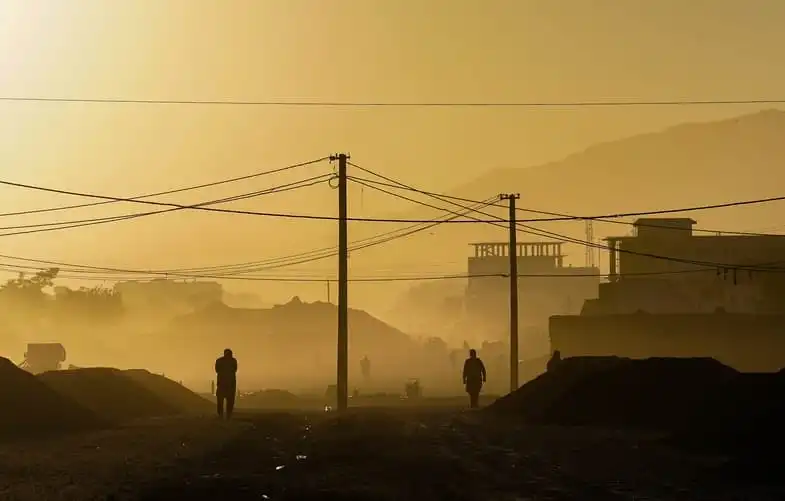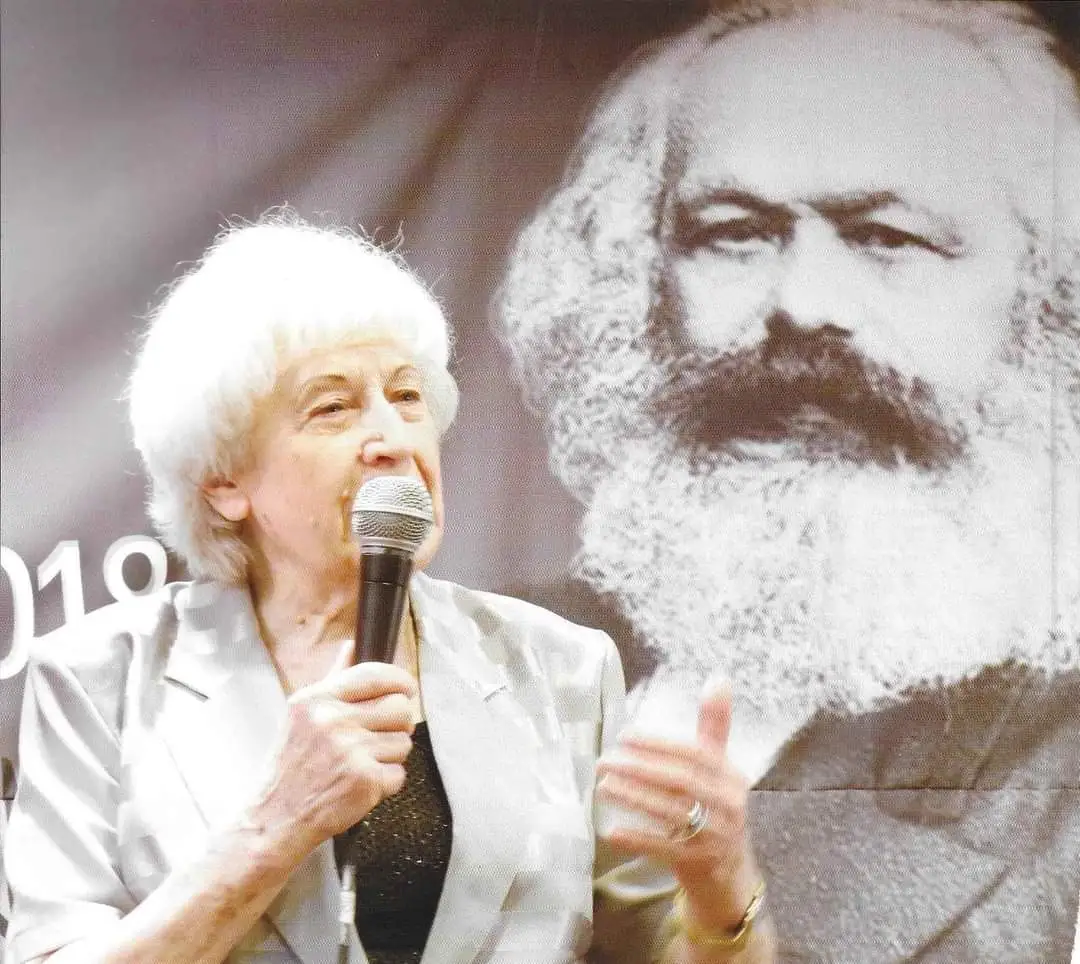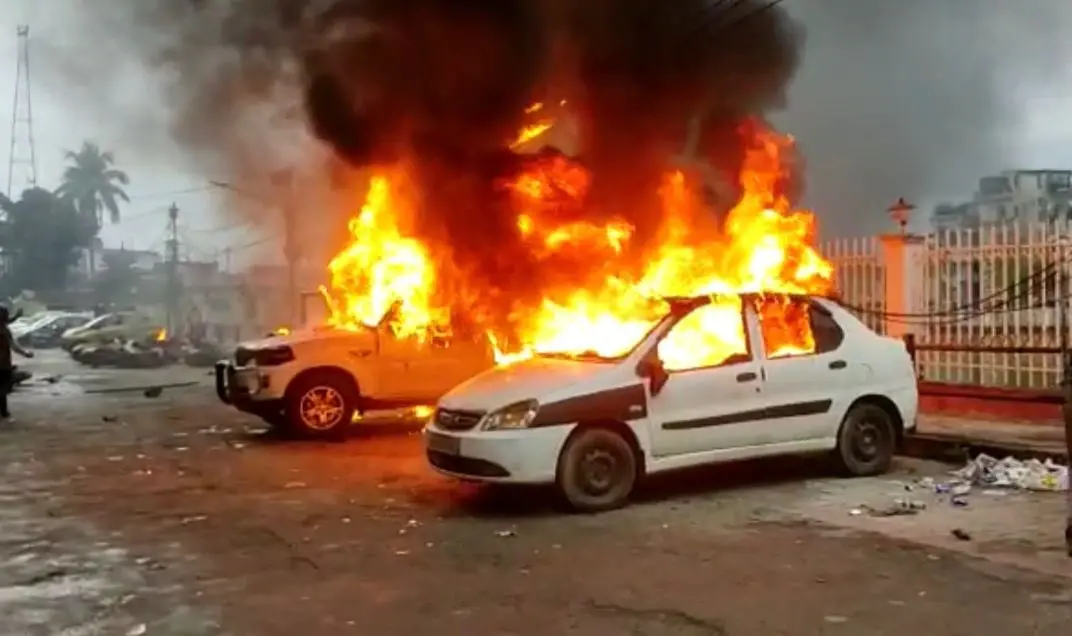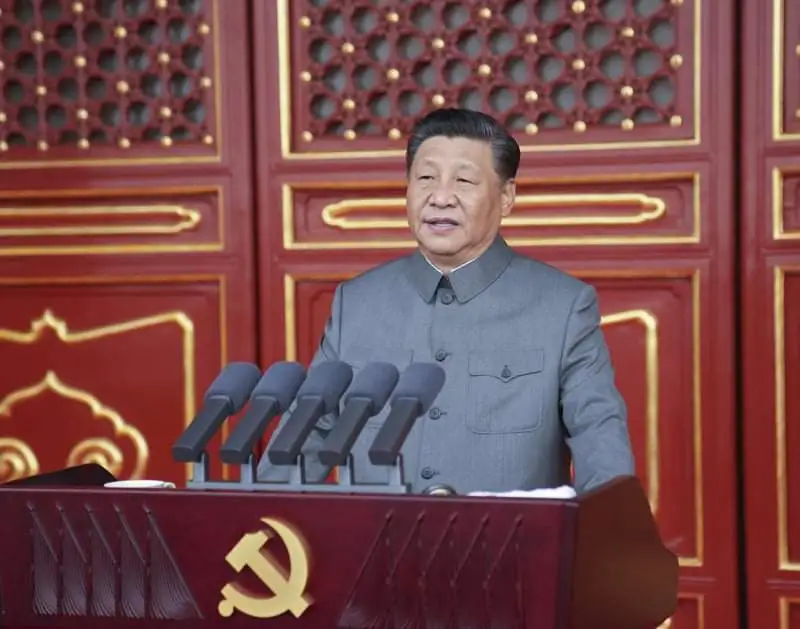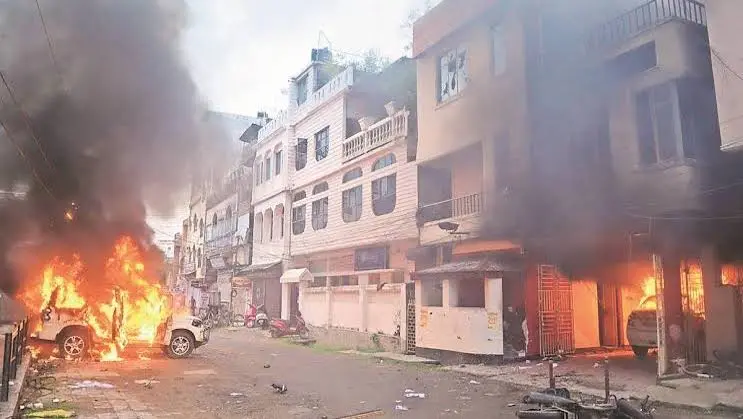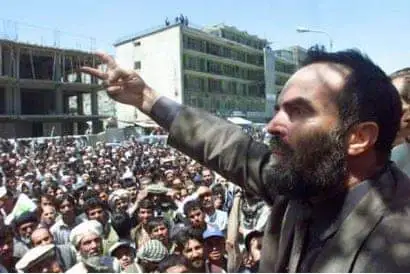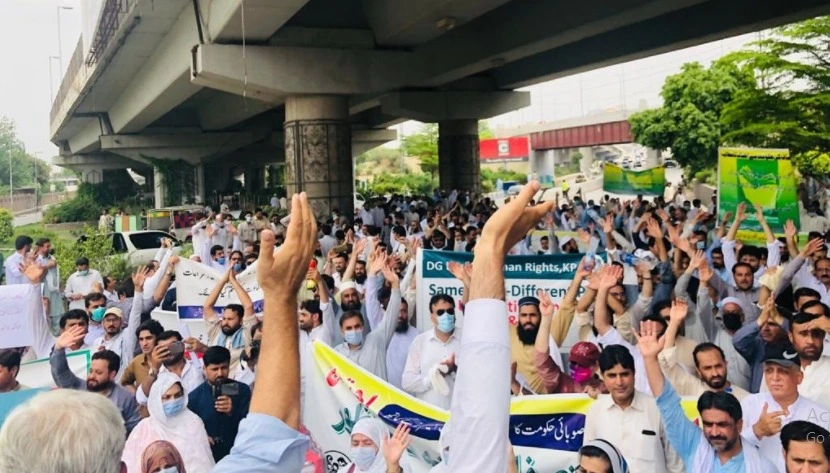The Taliban has retaken Kabul and declared the new name of the country to be the Islamic Emirate of Afghanistan led by Emir Hibatullah Akhundzada, also referred to as „Commandant of the Faithful‟. Those who do not want to remain under Taliban rule have been crowding the airport trying to get out. President Biden has now confirmed that all US troops will be withdrawn by 11th September 2021.
Whatever reservations we have about the Taliban, the role of the US in that country has been disastrous, as indeed it has been in its murderous interventions throughout the world.

Afghanistan is bordered by Iran on the west, by Pakistan on the east and south, and by Turkmenistan, Uzbekistan, and Tajikistan on the north; a narrow strip, the Vakhan, extends to the Xinjiang Uygur Autonomous Region of China.
The three Soviet republics to the north had a much higher standard of living than Afghanistan despite being similar in history, religion, culture and often, language. This fact was not lost on many Afghans who strived to emulate their northern brothers.
Thus the People's Democratic Party of Afghanistan (PDPA) was formed in 1965 on Marxist-Leninist principles to launch the vision of a socialist Afghanistan. The coming to power of the PDPA in 1979 led to the USA and Saudi Arabia arming and funding fundamentalist Islamic militants in Afghanistan leading to a complex war that seems now to be concluding.
Afghanistan is a mainly mountainous country but with fertile river valleys. There is a population of nearly 40 million divided into 14 main ethnic groups, the largest being the Pashtuns who form 42% of the population and are themselves divided into 4 main sub-groups and numerous clans. Tajiks are the next biggest group at 27% with Hazara and Uzbeks at 9% each. Dari and Pashto are the two national official languages, Dari, a form of Persian is the main language of administration and the most widely understood. 74% of the population live in rural areas and 46% are under 15. Afghanistan has the highest birth rate of any country outside of Africa. About 85% of Afghans are Sunni Muslim and 15% Shia Muslim, the number of people belonging to other religions is negligible.
The coalescence of Afghanistan into one country dates from 1709 when Mirwais Hotak, a Pashtun, led a resistance to the Persian Empire then ruling the territory of what is now Afghanistan. A successor, Ashraf Hotak was defeated by the powerful Persian Emperor Nader Shah in 1729, but Nader Shah was assassinated in June 1747. The following month, the Pashtuns called a Loya jirga, a traditional council meeting and elected Ahmad Shah Durrani who had been an army commander under Nader Shah as their king. The Durrani dynasty was to rule an Empire which included not only modern Afghanistan but stretched across modern Pakistan and other surrounding countries.
In 1823 Dost Mohammad Khan overthrew the weak Durrani ruler Ayub Shah and founded the Barakzai Dynasty which was to rule first as Emirs and then as kings until 1973 when Afghanistan became a republic.
The First Anglo-Afghan War took place between 1839 and 1842, following a British invasion. The British variously claimed that they were helping to sort out a dynastic dispute between Afghan factions and that they feared Russian influence ― the Russian Empire was extending into Central Asia at the time ― the British were defeated heavily. The Russians, then led by Tsar Nicholas I, although having some interest in Afghanistan, were not interested in coming into conflict with the British Empire.
The Second Anglo-Afghan War 1878-1880, ostensibly for the same purpose, was also very bloody but ended up with a better result for imperial Britain. The Treaty of Gandamak in 1879 put Afghanistan under British „protection‟ and gave a part of Afghanistan to British India which was to be known as the „North-West Frontier Province and is now a Pushto speaking part of Pakistan. In 1880, the slaughter of the British diplomatic mission in Kabul led to a renewal of the War.
The Third Anglo-Afghan War in 1919 was launched by Emir Amanullah into the Afghan lands seized by Britain as a result of the Second Anglo-Afghan War. The war ended in an Armistice in which Afghanistan agreed to recognise the Durand line officially established in 1893 but as a result of the Second Anglo-Afghan War. In return, the British recognised the end of the „protectorate‟ and the independence of Afghanistan.

In 1926, Emir Amanullah Khan announced himself as King of Afghanistan but was forced out of office in 1929.

It is here we should mention the wife of Amanullah, Soraya Tarzi, born in Syria of Afghan parents. She wore western-style clothes, went everywhere with her husband. This had previously been heard of in the wife of a Muslim political leader. The issue of women‟s rights in Afghanistan is historically a very important one. Opposition to women‟s rights was a major factor in the overthrow of the PDPA government and the first victory of the Taliban.
Well before the PDPA government took power, modern „western‟ dress was normal in the cities of Afghanistan. In the rural areas, men dressed much the same as Taliban fighters dress today, but the burka which women were forced to wear during the time of the first Taliban government was never part of the traditional dress of Afghan women. The new government, mindful of the mistakes of the first Taliban government has said that it will recognise women‟s rights “within the limits of Islam”. Indications are that the headscarf, the hijab, will be compulsory but not the more extreme coverings of the niqab (veil) or the burka.

Although the roots of Islamic fundamentalism already existed within the rural areas of Afghanistan, in its extreme form it was an import from Saudi Arabia ― with the assistance of the USA. The relationship between the USA to Saudi Arabia has long been toxic to the Middle East and the Muslim world. It dates back to the time of the establishment of the Kingdom of Saudi Arabia in 1932 under the domination of the extremist Wahhabi movement within Sunni Islam and the discovery of oil there in 1939. US oil companies were established in Saudi Arabia and the Wahhabis were able to secure funding and link up to other Salafist (fundamentalist) movements in the Islamic world. US commercial and political interests became entangled with Islamic fundamentalism. Thus, as we shall see, the USA assisted these extremists from the 1970s onwards, especially in overthrowing revolutionary-democratic and communist governments after which they demonised the very movements they had played a big role in creating.
Other than Afghanistan, it is no accident that those responsible for the 9/11 attacks in the USA were mostly Saudis, that the USA and Saudi Arabia funded al-Nusra and the Islamic State in Syria against the secular Arab-nationalist state of Syria and that NATO was in close co-operation with al-Qaeda in Libya which, following the NATO bombing, followed up with genocide against black Libyans and the reintroduction of slavery.
Let us return to events in Afghanistan. In 1973 Daoud Khan, a member of the Afghan royal family and a former Prime Minister seized power with the assistance of some army officers and also of the PDPA. He deposed King Zahir Shah and declared himself President. But in 1978 Daoud started to oust the PDPA, then under the leadership of Nur Mohammed Taraki, from positions in government.

In April 1978, the Khalq (Masses) faction of PDPA, led by Taraki and backed by much of the army, seized power, the more moderate Parcham (Flag) faction was, initially, also included in government. The new government adopted a policy of immediate reform including land reform and the abolition of usury, loans at high rates of interest to rural farmers. However, the rural elite fought back. A minimum wage was established in the cities. Women‟s rights were upheld and forced child marriage was abolished.
Things went very wrong in 1979 when the leader of the Revolutionary Council, President Taraki, was killed by his former close aide, Hafizullah Amin who then made himself President. Amin had previously been responsible for pushing the Parcham faction out of government and had been guilty of unnecessary repression which he then increased on assuming power, alienating a large section of the people. The Soviet Union, which had already cautioned Taraki about moving too quickly was horrified by the rash actions of Amin and at the request of Babrak Karmal and the Parcham faction sent in troops in December 1979 to stabilise the situation. Amin was executed and the more reasonable Karmal became President.
It is virtually certain that the progressive policies of the new government would have eventually found favour with the majority of the population, but from July 1979, well before Soviet intervention, Jimmy Carter and his security advisor Zbigniew Brzezinski decided, together with Saudi Arabia, to assist the armed Mujahedeen. In a 1997 interview, Brzezinski spoke of “drawing the Russians into the Afghan trap.” He went on: “The day that the Soviets officially crossed the border, I wrote to President Carter: „We now have the opportunity of giving to the USSR its Vietnam War.” Senator David Durenberger, who was Chairman of the Senate Intelligence Committee, said in 1985: “My understanding of the current policy is that anything that will keep the Soviets busy in their own Vietnam may well advance our national security…”


The US and Saudi Arabia together spent about $40 billion on supporting Mujahedeen fighters. Al-Qaeda (The List) was formed and the picture of Osama Bin Laden appeared in several newspapers as a „freedom fighter‟. With assistance from Pakistan and its Inter-Services Intelligence (ISI), the Mujahedeen were supplied with 2,500 of the latest American stinger heat-seeking missiles. The USA was so proud of its assistance to the Mujahedeen that they even made movies about it, including Charlie Wilson’s War and Rambo III.
Finally, after 9 years of war, the Soviet Union pulled out in 1989. The PDPA government under Najibullah survived until 1992. Then followed a period of chaos until 1996 when the extremist Taliban took Kabul. Controlling the southern two-thirds of the country, the Taliban banned all-female education, neither were women allowed to work. They banned all forms of entertainment including music and football. Minorities, especially Shiite Muslims, were persecuted.

The USA, following the attacks on the World Trade Centre and the Pentagon on the 11th September 2001, launched attacks on various Muslim countries ― but not Saudi Arabia where most of the attackers came from! They knew very well that al-Qaeda, under the leadership of Osama bin Laden ― whom they had trained ― was in Afghanistan. The Taliban had never conquered or controlled the northeast of Afghanistan which was under the control of the Northern Alliance. It was from there that the Americans took Kabul putting in power a government of its choosing. From 2002-2014, Hamid Karzai and then Ashraf Ghani 2014-2021 led the Islamic Republic of Afghanistan under the watchful eye of the USA which over 20 years spent $1 trillion trying to keep them in power. Meanwhile, the Taliban regrouped, even making deals with the Shiite Hazaras and learning from its more extreme errors.
Some recent Western-based reports have accused the Taliban of funding themselves from the sales of opium and heroin. That may or may not be correct, but the truth about the growing opium poppies is much more complicated and at least during one period was used by the CIA to fund their operations.
The facts are that opium production was high under the US influenced the government of Afghanistan of the 1970s, decreased 10-fold by 2001 under the Taliban, and then increased 30-fold and more under the US to the same level as in the 1970s. Today, Afghanistan supplies more than 90% of the world‟s illicit opium, from which heroin is made. So who‟s profiting from the trade?
Before 1979 Pakistan and Afghanistan exported very little heroin to the West, but by 1981, trucks from the Pakistan army‟s National Logistics Cell arriving with CIA arms from Karachi often returned loaded with heroin ― protected by ISI papers freeing them from police search. In 1981, then CIA Director William Casey, Prince Turki bin Faisal of Saudi intelligence and the ISI worked together to create a foreign legion of jihadi Muslims or so-called Arab Afghans. More than 100,000 Islamic militants were trained in Pakistan between 1986 and 1992 in camps overseen by the CIA and British MI.6. The SAS, British special forces, trained future Al-Qaeda and Taliban fighters in bomb-making and other military arts while their leaders were trained at a CIA camp in Virginia. CIA aid was funnelled through Pakistani President General Zia-ul-Haq and the ISI in Pakistan.
In 1995, the ISI was actively aiding the Taliban in Afghanistan‟s civil war against the warlords that controlled the country. In addition, just as in the Afghan war against the Soviet Union in the previous decade, the ISI looked to Saudi intelligence to provide the funding for the Taliban, and the ties between the ISI and Saudi intelligence grew much closer.

Shortly after the Taliban came to power the first time, they began a campaign to eradicate Afghanistan‟s opium crops, and the success of Afghanistan‟s 2000 drug eradication program under the Taliban government was even recognised by the United Nations as a monumental feat, in that “no other country was able to implement a comparable programme.” In October of 2001, the UN acknowledged that the Taliban reduced opium production in Afghanistan from 3300 tons in 2000 to 185 tons in 2001.
In June of 2001, a few months before 9/11, a gift of $43 million to the Taliban rulers of Afghanistan was announced by Secretary of State Colin Powell, “…in addition to other recent aid.” This indicated that the United States was sponsoring the Taliban.
Drug trafficking is the largest global commodity in profits after oil and the arms trade; immediately following the October 2001 invasion opium markets were restored. Opium prices spiralled. By early 2002, the domestic price of opium in Afghanistan was almost 10 times higher than in 2000. The invasion of Afghanistan by the USA and its allies successfully restored the drug trade.
In 2005 it was reported by the British newspaper the Independent that Afghanistan‟s Interior Minister had resigned, amid reports he had quit because of the involvement of senior government officials in the illegal drug trade. Because of this, he was believed to have had differences with President Karzai over the appointment of Provincial officials. In 2006, the British newspaper, the Independent reported that:
“British intelligence officers and military commanders accused the US of undermining British policies in Iraq and Afghanistan, after the sacking of a key British ally in the Afghan province of Helmand.” The British “blamed pressure from the CIA for President Hamid Karzai‟s decision to dismiss Mohammed Daud as governor of Helmand.” Mr Daud “had survived several Taliban assassination attempts, was seen as a key player in Britain‟s anti-drugs campaign in Helmand,” and was fired after Hamid Karzai, Afghanistan‟s President, “listened to advice from „other powerful Western players‟.”
Former British Ambassador to Uzbekistan, Craig Murray, wrote in a 2007 article in the UK Daily Mail, that what has been achieved in Afghanistan is:
“…the highest harvests of opium the world has ever seen.” Murray elaborated that, “Our economic achievement in Afghanistan goes well beyond the simple production of raw opium. Afghanistan no longer exports much raw opium at all. It has succeeded in what our international aid efforts urge every developing country to do. Afghanistan has gone into manufacturing and
„value-added‟ operations.” This means that Afghanistan “now exports not opium, but heroin. Opium is converted into heroin on an industrial scale, not in kitchens but factories. Millions of gallons of the chemicals needed for this process are shipped into Afghanistan by tanker. The tankers and bulk opium lorries on the way to the factories share the roads, improved by American aid, with NATO troops.” Murray explains that this was able to happen because “the four largest players in the heroin business are all senior members of the Afghan government.” Murray stated that “Our only real achievement to date is falling street prices for heroin in London.”
In 2002, a former Additional Secretary in the Cabinet Secretariat of the Government of India wrote that regarding the failure to combat the rise in opium production:
“…this marked lack of success in the heroin front is because the Central Intelligence Agency (CIA) of the USA, which encouraged these heroin barons during the Afghan war of the 1980s to spread heroin addiction amongst the Soviet troops, is now using them in its search for bin Laden and other surviving leaders of the Al Qaeda.”
The Hindu reported in 2008 that:
“90 per cent of the heroin sold in Russia comes from Afghanistan,” and Putin was quoted as saying, “Unfortunately, they (NATO) are doing nothing to reduce the narcotic threat from Afghanistan even a tiny bit,” and that the coalition forces were “sitting back and watching caravans haul drugs across Afghanistan to the former Soviet Union and Europe.” The article then reported that “according to unconfirmed reports the U.S. military transport aviation is used for the delivery of drugs from Afghanistan to the American airbases, Ganci in Kyrgyzstan and Incirlik in Turkey,” and that, “It has been reported earlier that the CIA is involved in Afghanistan‟s opium production, or is at least protecting it.” One Russian journalist quoted anonymous Afghan officials as saying, “85 per cent of all drugs produced in southern and southeastern provinces are shipped abroad by U.S. aviation.”
Heroin‟s street price, mainly in Western cities around the world, is 80 to 100 times the price paid to the farmers who cultivate opium in Afghanistan. The IMF reported that in the late 1990s, money laundering accounted for 2-5% of the world‟s GDP and that a large percentage of the 590 billion to 1.5 trillion dollars in annual money laundering is directly linked to the trade in narcotics. This lucrative trade in narcotics produces profits that are laundered in the numerous offshore banking havens in Switzerland, Luxembourg, the British Channel Islands, the Cayman Islands and some 50 other locations around the globe. These offshore havens are controlled by major Western banks and financial institutions which have a vested interest in maintaining and sustaining the drug trade.
Afghanistan shares considerable cultural and linguistic ties to the Pashtun population of Pakistan where people are overjoyed with the departure of the USA which has carried out unwanted raids in Pakistani territory. Shortly before the recent take-over, the Taliban had been engaged in talks with both China and Russia over recognition and economic assistance.

But how will the Taliban behave internally?
During their first term of office, they used an extreme interpretation of Sharia Law which, in particular, was used to make women uneducated and prisoners in their own homes. The virtual enslavement of half the population is a problem in itself, but there is another issue that springs from this; the high birth rate which is at around 4.1 births per woman is the highest outside Africa and makes effectively feeding the nation increasingly difficult. It is a well-established fact that free and educated women have fewer children. The better news is that we have seen girls continuing to attend school since the takeover, albeit wearing the hijab.
So far, we have observed that the Taliban leadership has learnt from its previous errors and in any case, worldwide, the indications are that Islamic fundamentalism has passed its most extreme point. Nevertheless, reports indicate that some Taliban soldiers do not understand the principle of national reconciliation.
Afghanistan has a long tradition of settling problems through violence. Peaceful change has been rare in Afghanistan during any time in its history. This was reflected even within the ranks of the People‟s Democratic Party of Afghanistan which assumed power when it was already divided into two factions. And although the PDPA did well in the cities, three-quarters of the population are peasants. It seems that far too little was done to explain the process of land reform. Nevertheless, it is gratifying to know that the Watan Party exists as the successor to the PDPA and in 2017 held a meeting in Kabul attended by thousands. We note also the existence of the Communist Party of Afghanistan (Maoist) but do not have sufficient information to comment on.

The problem of heroin production in Afghanistan is now affecting South Africa spreading to Zimbabwe. Mass production has brought down the price. In South Africa, heroin is mixed with cannabis and other things to make nyaope which is being smoked by unemployed youth. In Afghanistan opium has become a major cash crop for many peasants. We know that ministers in the puppet government were heavily involved in its production. We suspect that the Taliban during their struggle also benefitted, but they have promised to stop opium production as they did before and we wish them success on that.
We cannot know, what will happen next, but we are happy that the US has left and we would like them to withdraw their troops from Africa and the rest of the world. We do not expect a government that bases its way forward on religious fundamentalism to carry out the kind of development which we would like to see. But if the Taliban can do better than last time, and if it can adhere to its recent statements, there is a little hope.
